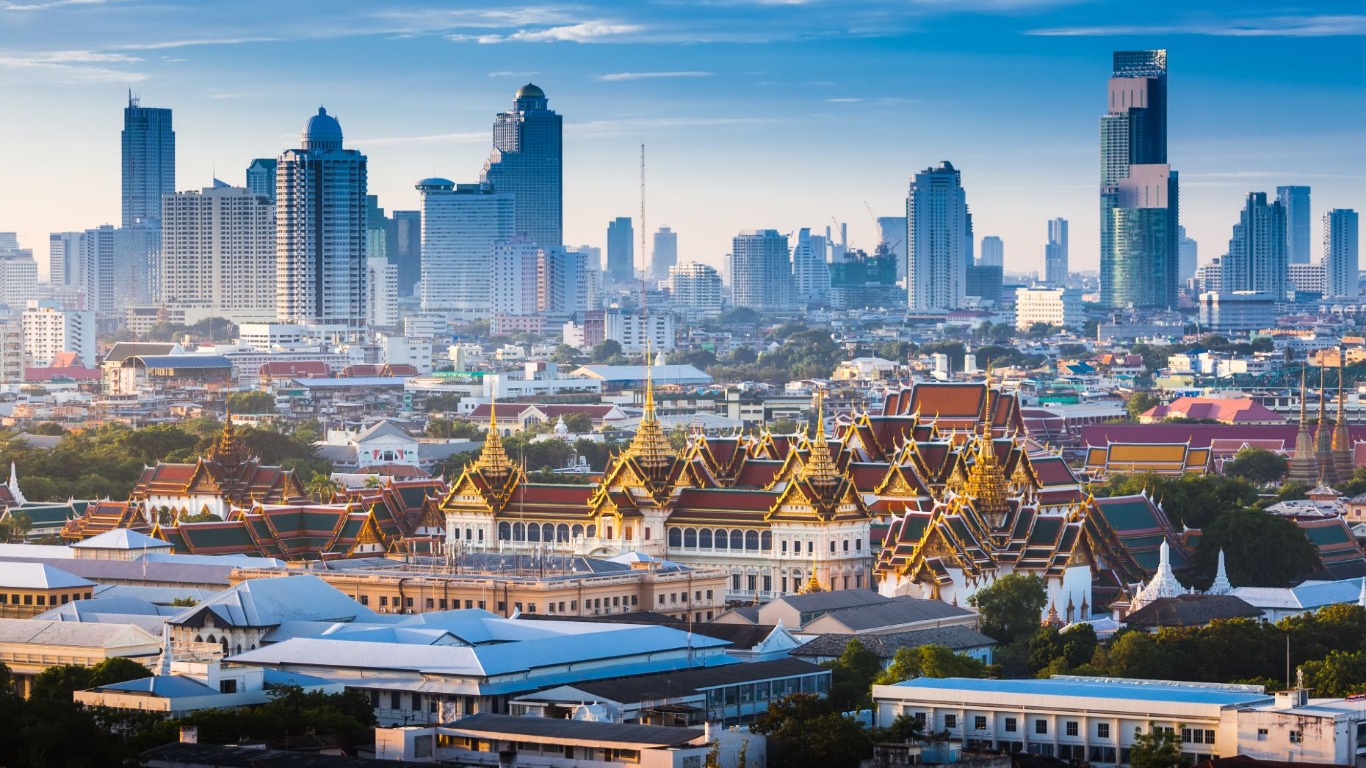What to see and do in Bangkok's neighbourhoods
Thailand’s capital is a colourful, fragrant metropolis filled with neighbourhoods which are as diverse as its food scene. Wondering where to base yourself, which neighbourhoods should be on your hit list and which area has the best street food? Fear not, because we’ve come to the rescue with the ultimate guide to Bangkok's top neighbourhoods.
Charoen Krung
This is one of Bangkok’s most colourful areas, named after the 5.5-mile (9km) road it’s clustered around. It’s also Bangkok’s oldest road, first paved in the 1860s when traders complained their horse-drawn carriages couldn’t navigate the muddy street. It was transformed again in 2017, when the Thailand Creative and Design Center moved here.
It’s now Bangkok’s creative district, a colourful explosion of independent boutiques, galleries and restaurants, many of which are tucked into traditional Thai shophouses. New hotels are popping up here too, such as the Four Seasons Hotel Bangkok, wedged between Charoen Krung and the river, and filled with lush gardens. It’s also got an in-house art gallery created in collaboration with one of the area’s many galleries.
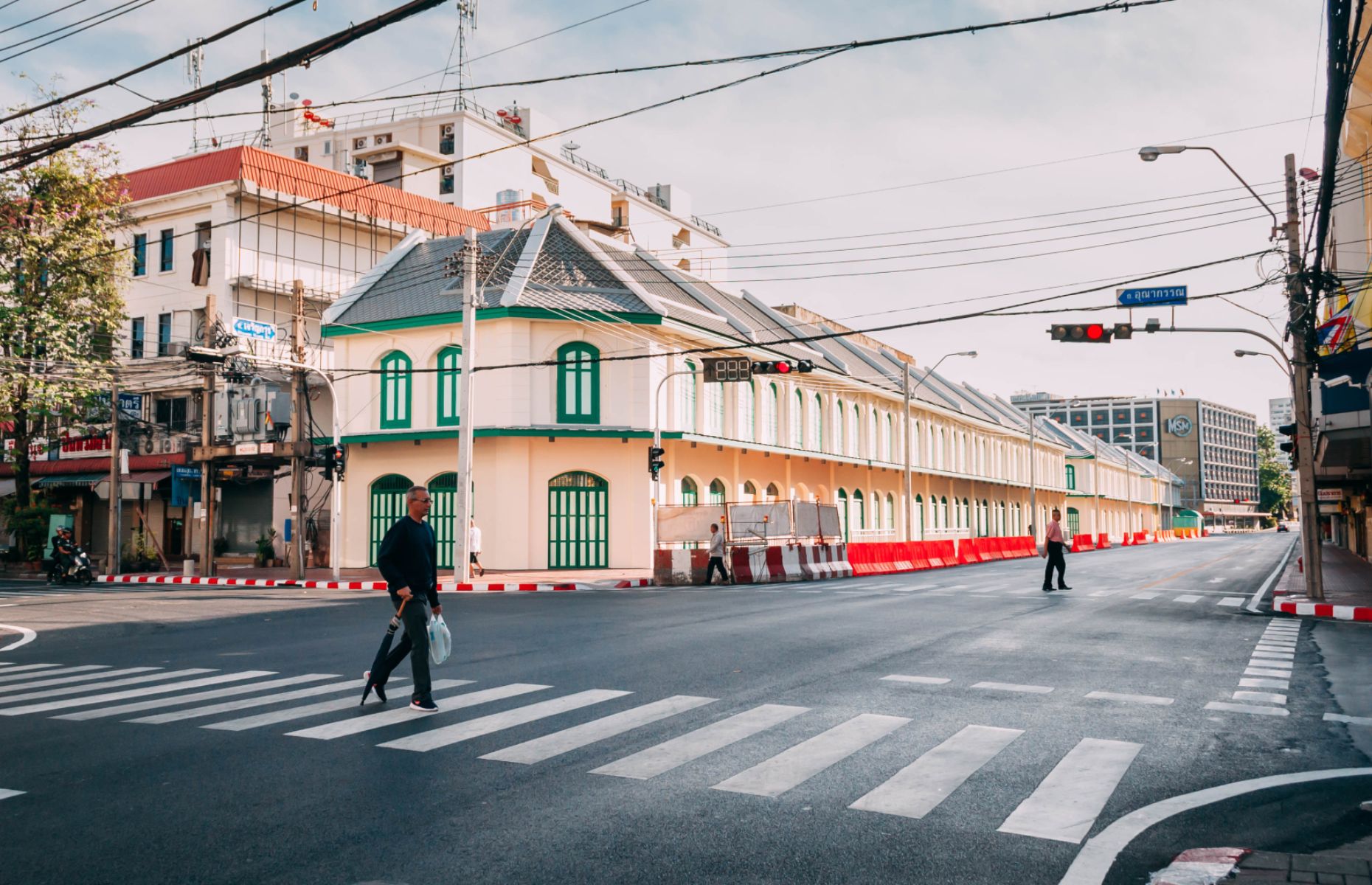 Sunat Praphanwong/Shutterstock
Sunat Praphanwong/Shutterstock
Sukhumvit/Asok
Sukhumvit isn’t really a neighbourhood, although it’s often referred to as such. It’s actually Bangkok’s busiest road – a 303-mile (488km) highway which starts in Bangkok and finishes near Cambodia.
The reason it’s often referred to as a neighbourhood is because the city centre section – AKA Asok – is lined with Bangkok’s best hotels, shops and boutiques.
This is where you’ll find Bangkok’s biggest malls, along with smaller ones such as the quirky Terminal 21, where floors are named after cities. Unlike many nearby malls, it’s filled with independent retailers, our favourite of which is A Pick Me Up, which specialises in rubber duck-themed T-shirts (trust us, they’re amazing).
Asok is a brilliant base, due to the transport connections – it’s where the BTS (skytrain) and underground MRT (metro) intersect, and you can board the Suvarnabhumi International Airport rail link here too.
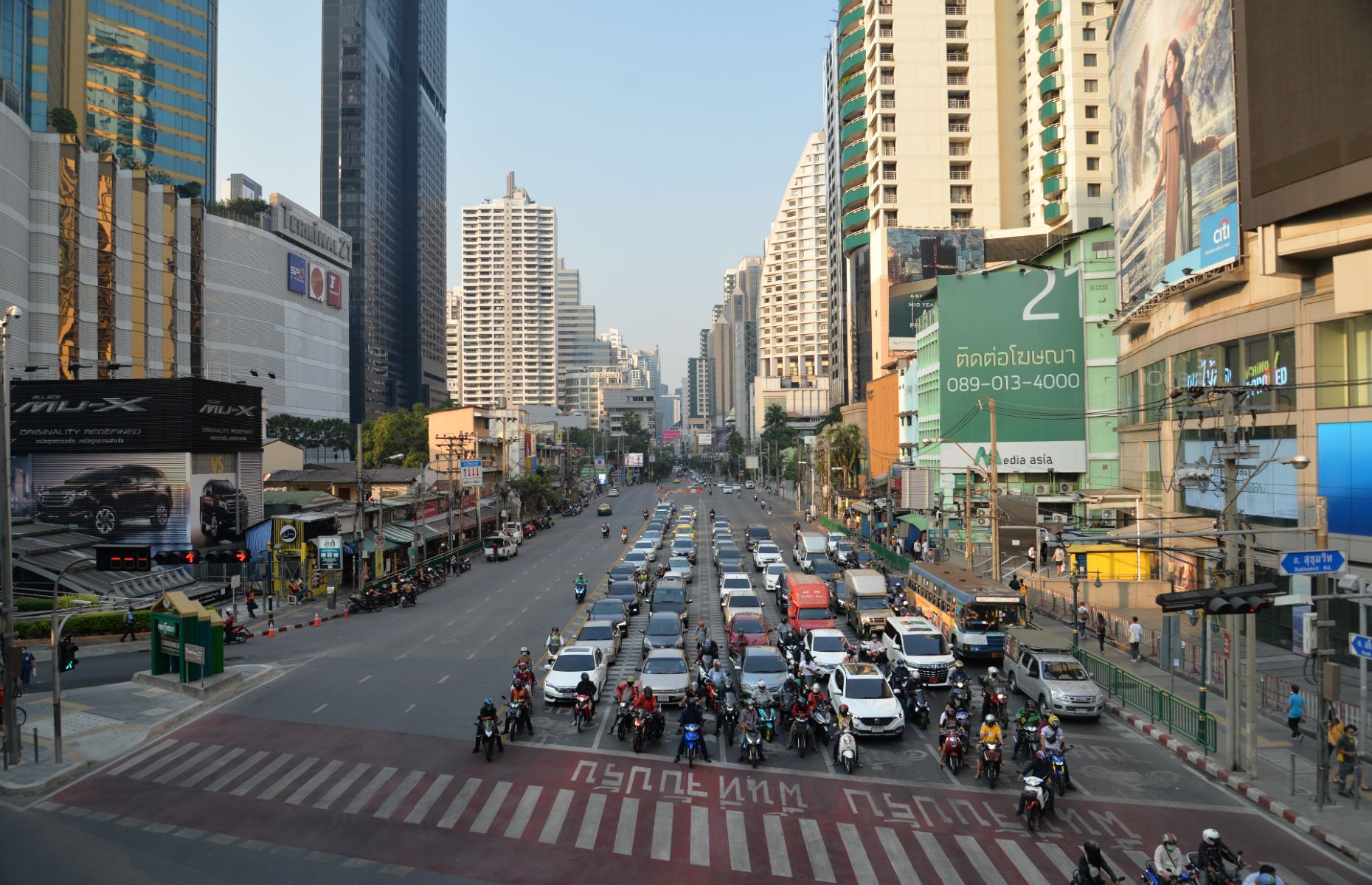 Kollawat Somsri/Shutterstock
Kollawat Somsri/Shutterstock
READ MORE: A guide to San Francisco neighbourhoods
Lumphini
Lumphini is an area as well as Bangkok’s first and largest park – a vast green space filled with banyan trees, inquisitive (but harmless) monitor lizards and a tangle of hiking and cycling trails. A number of fantastic hotels line the roads surrounding the park, and they’re great options if you love a good view, not just of the park but the Royal Bangkok Sports Club.
One of our favourites is the SO/ Bangkok, a luxurious design hotel that plays host to the brilliant Chocolab chocolate café and boutique, achingly hip decor and various fantastic initiatives, whether it’s the SO/ Pool Party or Cheese at SO/, a decadent cheese buffet (complete with numerous imported varieties) on the first Friday of every month.
Despite the abundance of green space, there are great transport connections – hop on the MRT at Lumphini and it’s just three stops to Sukhumvit station, which intersects with the BTS (skytrain).
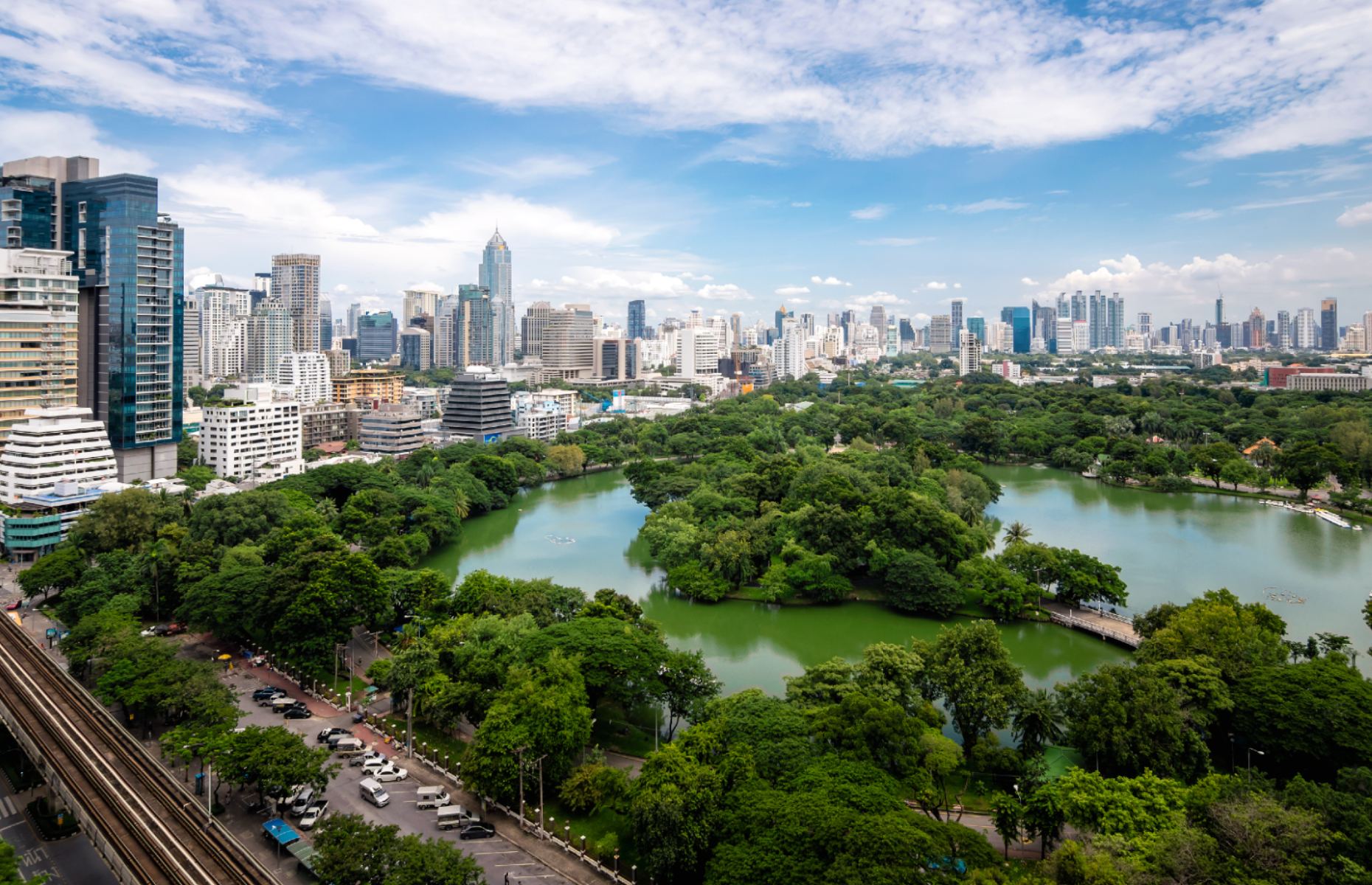 PICONEST/Shutterstock
PICONEST/Shutterstock
Chinatown
In many ways, riverside Chinatown is the best place to experience the real Bangkok. Like Asok it’s loud, bright and busy, although less polished – and we mean that as a compliment.
It’s one of the world’s oldest Chinatowns, filled with spectacular temples, sprawling wet markets and street food stalls serving up dishes such as stir-fried crab. Make sure you check out the Wat Traimit temple, where you’ll find the world’s largest solid gold Buddha.
One of the best ways to explore this neighbourhood is on a guided bike tour led by Co Van Kessel. You’ll learn about Chinatown’s lesser-known areas, such as Sieng Kong, the go-to spot for engine parts – the building-sized towers of crankshafts and pistons are spectacular. Its origins date back to the Second World War, when military vehicles dumped by retreating forces were broken down and sold on by locals.
You’ll find our favourite Chinatown spot, the Ong Ang Canal, on Chinatown’s western edge, where Asia’s best graffiti artists have daubed beautiful murals – all of which reflect an aspect of life in Thailand – onto the canal’s walls.
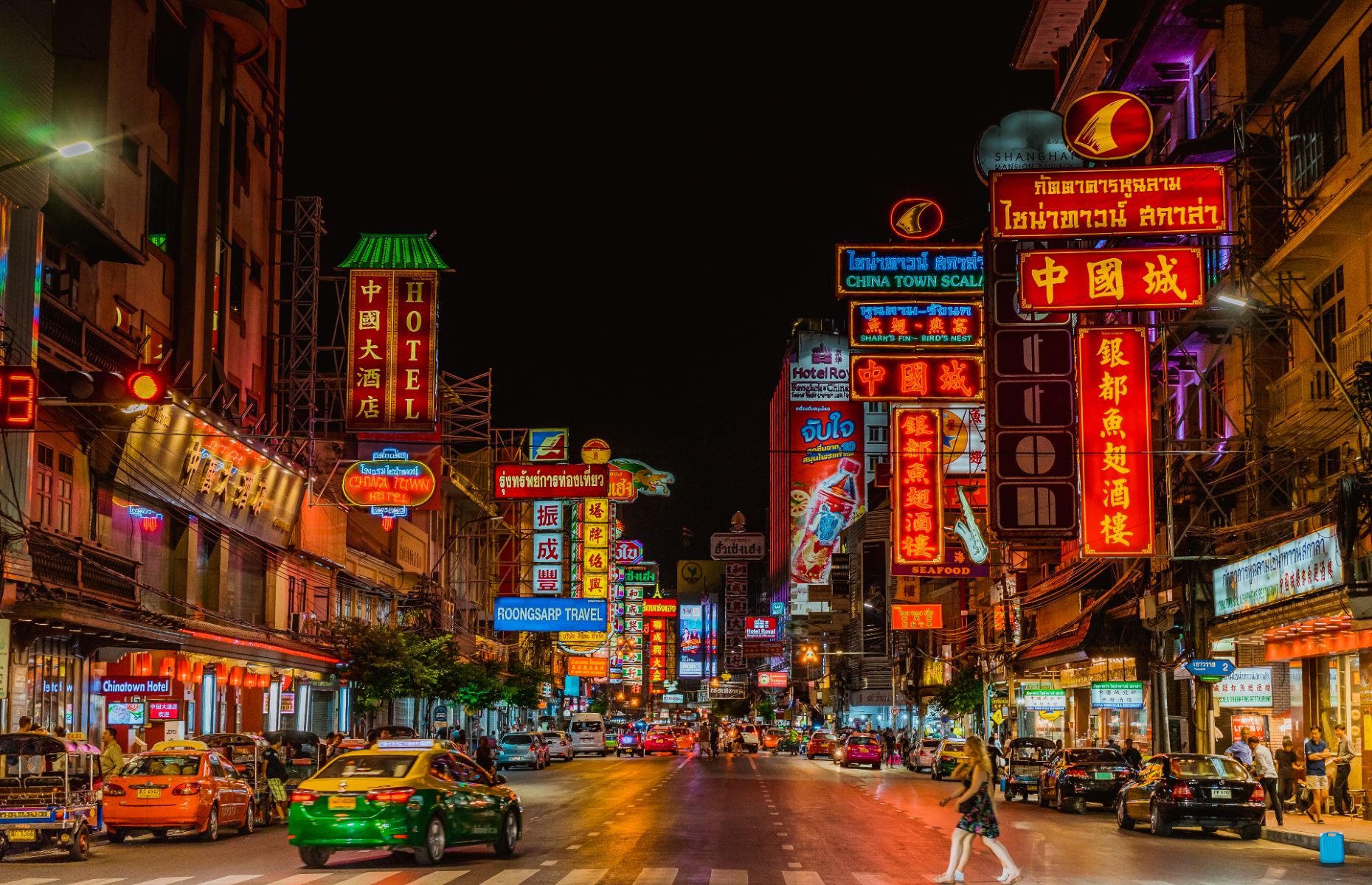 MR. SUTTICHAI CHALOKUL/Shutterstock
MR. SUTTICHAI CHALOKUL/Shutterstock
READ MORE: The world's most beautiful canals and waterways
Sukhumvit/Thong Lo
Say hello to Bangkok’s hippest neighbourhood – another which lines a stretch of Sukhumvit Road. It’s an achingly cool area filled with gorgeous restaurants, cafés and bars. At its heart is The Commons, best-described as a plant-filled, four-storey community shopping mall. If an elephant magnet won’t cut it in the souvenir stakes, this is where you want to come.
The Commons’ Village section has the best stores (as well as a fantastic burger joint), although we also love the Top Yard area, where visitors can lounge on a lawn while gorging on comfort food.
It’s a place which perfectly sums up laidback Thong Lo, which has some of Bangkok’s coolest cafés. For a chilled out caffeine fix, it’s got to be the Sit and Wonder café, where delicious lunches (we recommend the tom yum soup) start at around £1.50.
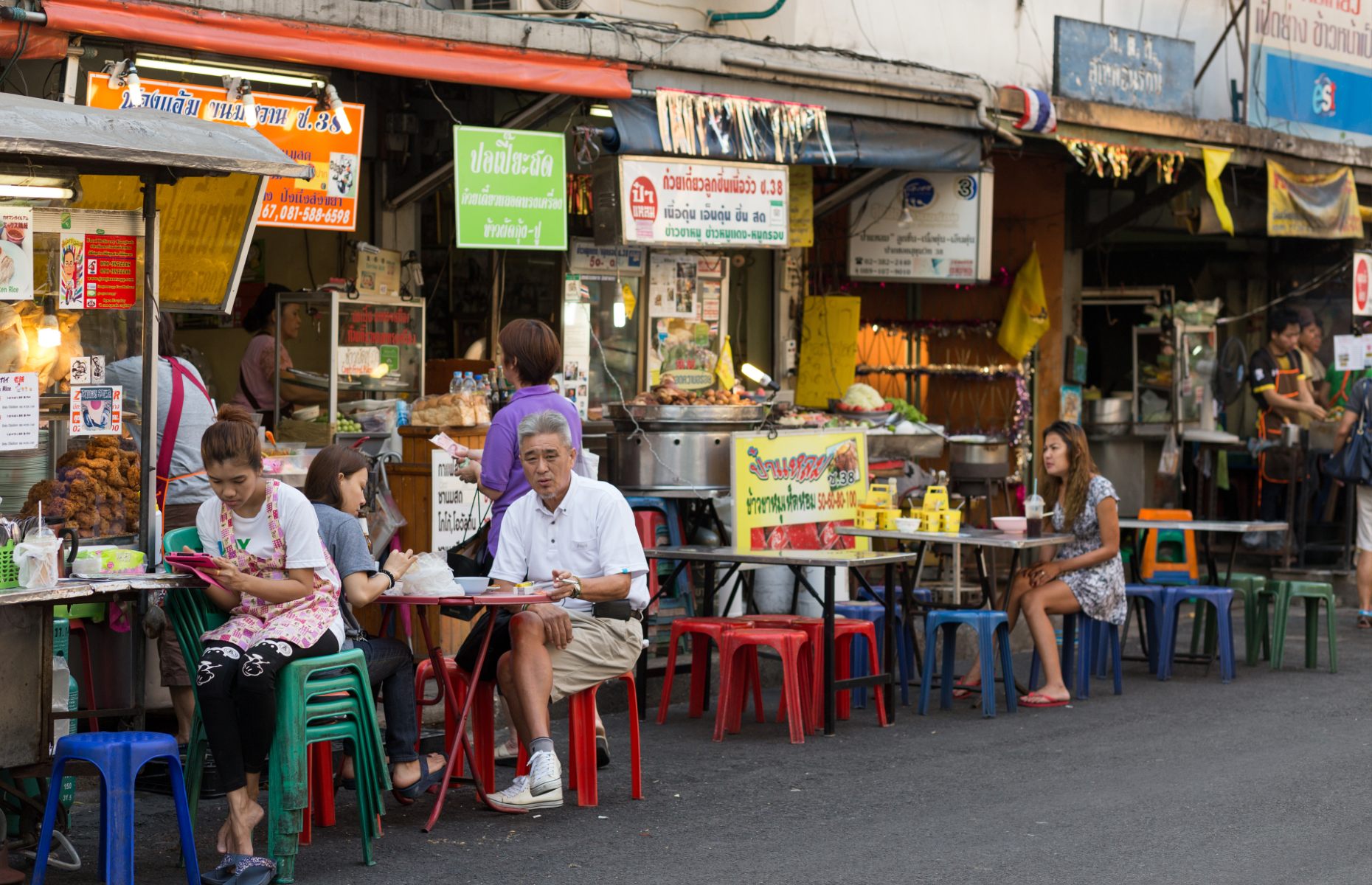 Stephane Bidouze/Shutterstock
Stephane Bidouze/Shutterstock
Ari
A leafy neighbourhood vying for Thong Lo’s hipster crown, Ari is a district slightly to the north of central Bangkok. It’s where you’ll find gorgeous cafés and restaurants, along with some fantastic bars, many of which serve craft beer (a rarity in Bangkok, given the popularity of royal warrant-holding Singha).
Its laidback vibe and beautiful architecture are the reasons this neighbourhood is incredibly popular with Instagrammers and bloggers, many of whom flock to easy-on-the-eye Josh Hotel, famous for its retro decor.
In summary, come to Ari for its cafés and craft beer bars, and for long walks along its leafy, breezy lanes. Just be prepared to dodge a selfie stick or two.
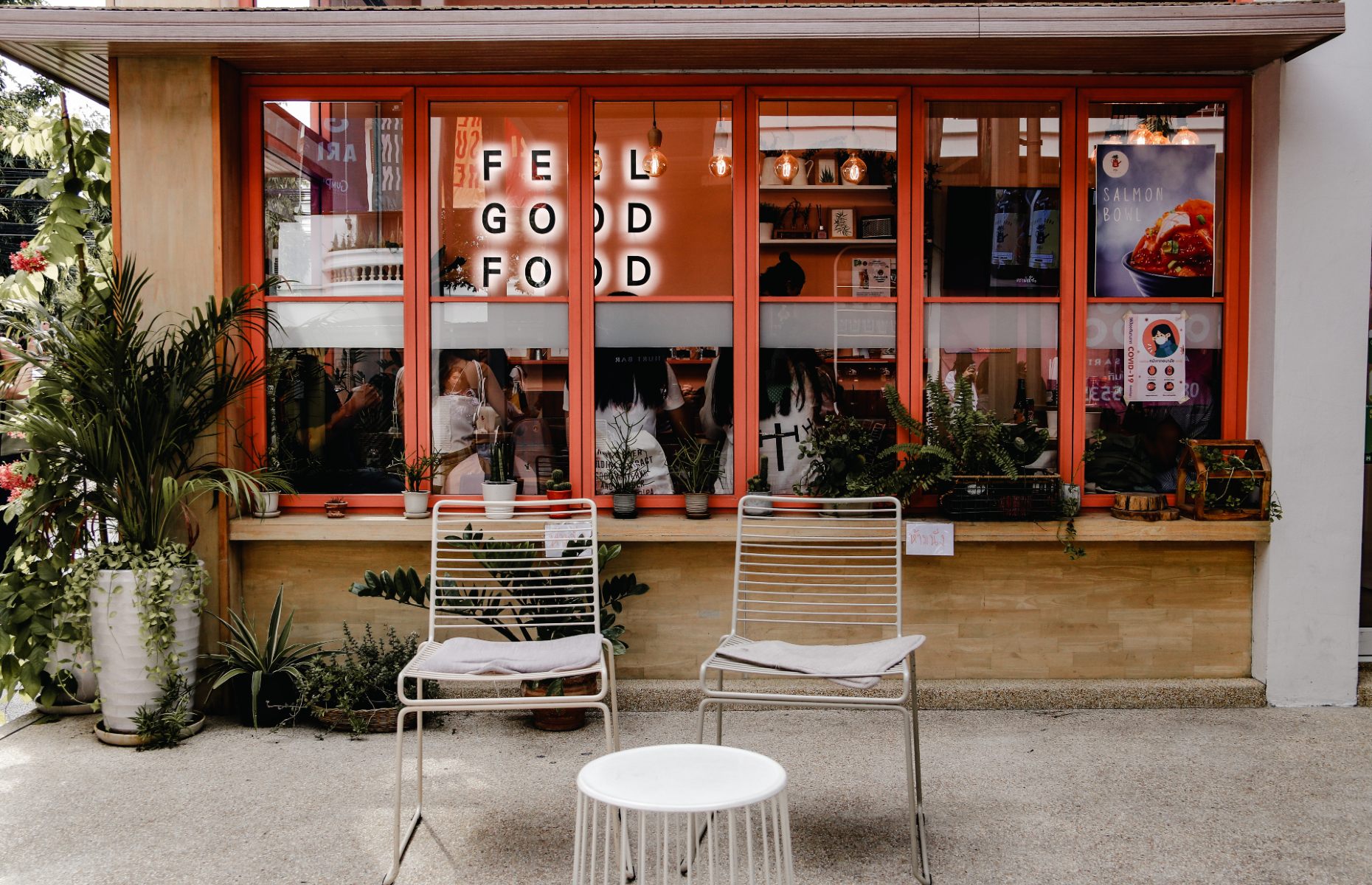 PangJee_S/Shutterstock
PangJee_S/Shutterstock
READ MORE: The best affordable 5-star hotels in the world
Silom
Silom, squeezed between Lumphini Park and the Chao Phraya River, forms part of Bangkok’s central business district. By day, it’s a financial hub, but when dusk falls it’s a brilliant option for a night on the town.
Great transport connections explain why many visitors choose to base themselves here. There’s also a wide range of accommodation, including the fantastic Sukhothai, famous for its legendary chocolate buffet. Love a rooftop bar? You’re in the right place – many hotels here have gorgeous rooftop watering holes.
Silom is also where you’ll find the Sri Maha Mariamman Hindu temple, with its impossibly ornate statues depicting Hindu gods and goddesses such as Ganesh and Vishnu.
Don’t forget to check out the Mahanakhon Skywalk at the Mahanakhon tower, home to Thailand's highest observation deck. Brave this reinforced glass walkway, 1,030 feet (314m) above sea level, and you’ll definitely have earned a cocktail at the fantastic Ojo Bangkok, a Mexican restaurant and bar which opened in early 2022 on the Mahanakhon tower’s 76th floor. It’s operated by one of Bangkok’s newest hotels – The Standard, Bangkok Mahanakhon, which also opened earlier this year.
READ MORE: The world's highest observation decks you can visit
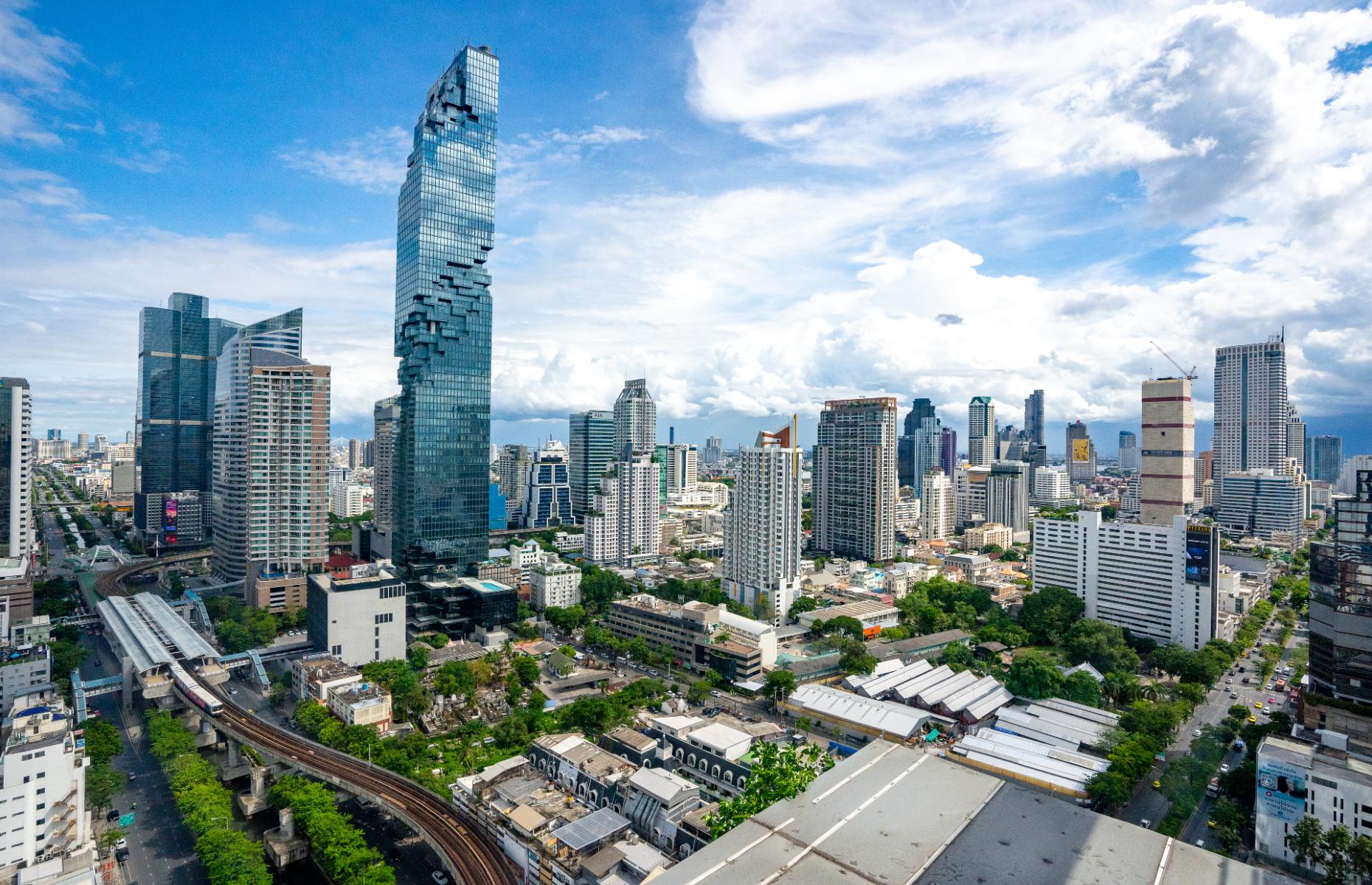 Suthikait Teerawattanaphan/Shutterstock
Suthikait Teerawattanaphan/Shutterstock
Siam
Love to shop? Then Siam’s your place. One of the most popular retail meccas is Siam Paragon, one of Thailand’s largest and most luxurious shopping centres (Bentley, Chanel and Piaget all have concessions here), although there are plenty of opportunities for a culture fix too.
Top of your list should be a visit to the Bangkok Art and Culture Centre (BACC), where you’ll find several brilliant galleries, alongside boutiques such as Paradai, one of the country’s growing number of bean-to-bar chocolate brands.
We also recommend checking out the art-filled Jim Thompson House, which is actually six teak Thai houses joined together. It was built by American businessman and art collector Jim Thompson, who relocated to Bangkok and founded the Thai Silk Company in 1948, before going missing in 1967.
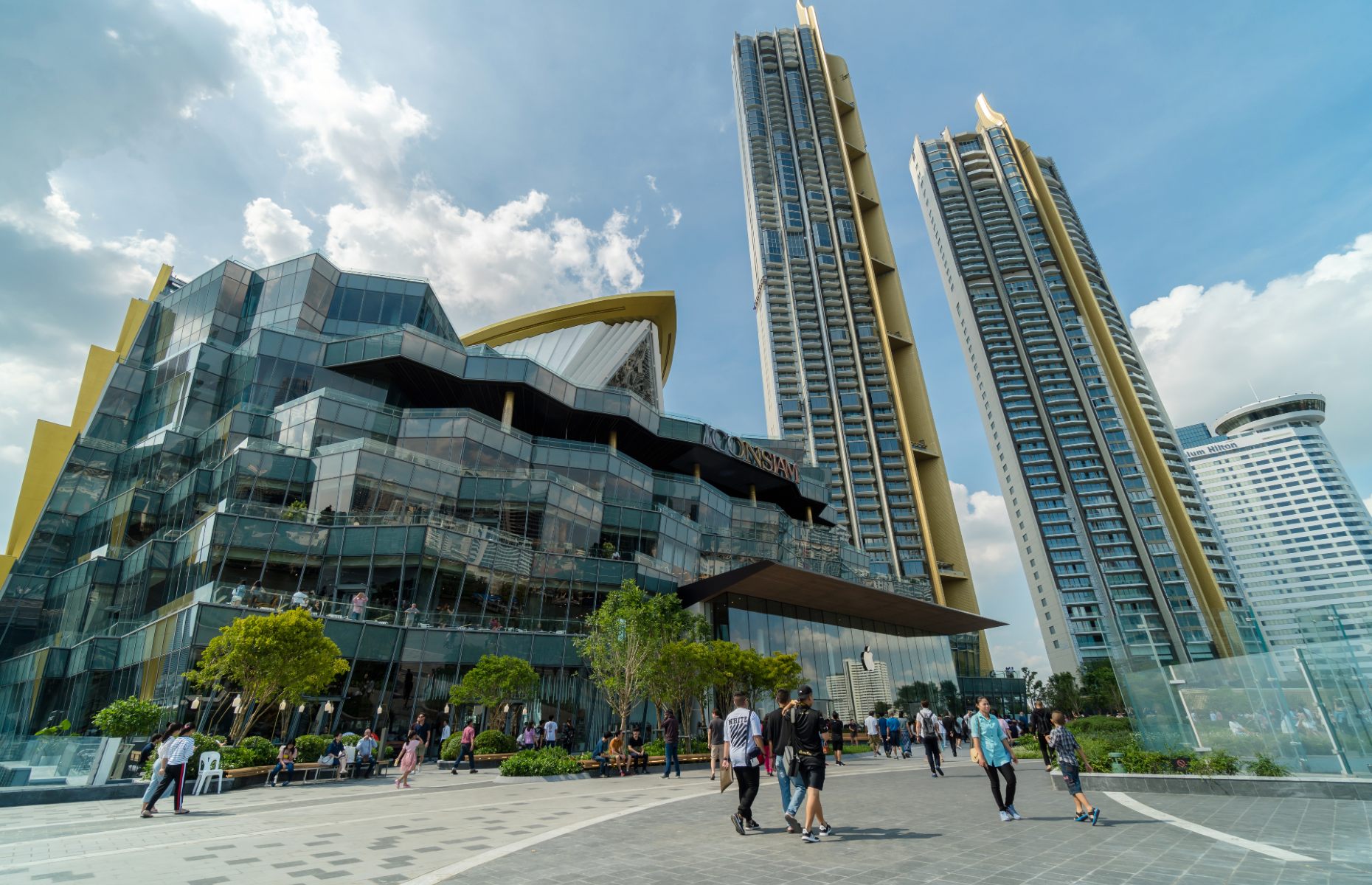 TZIDO SUN/Shutterstock
TZIDO SUN/Shutterstock
READ MORE: A guide to Los Angeles' neighbourhoods
Lead image: TWStock/Shutterstock
Comments
Be the first to comment
Do you want to comment on this article? You need to be signed in for this feature
